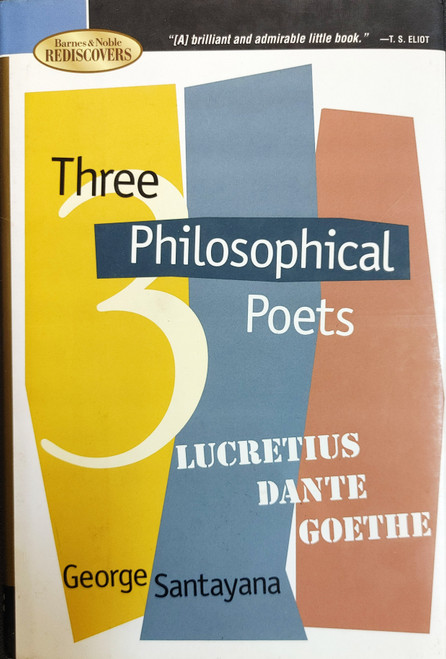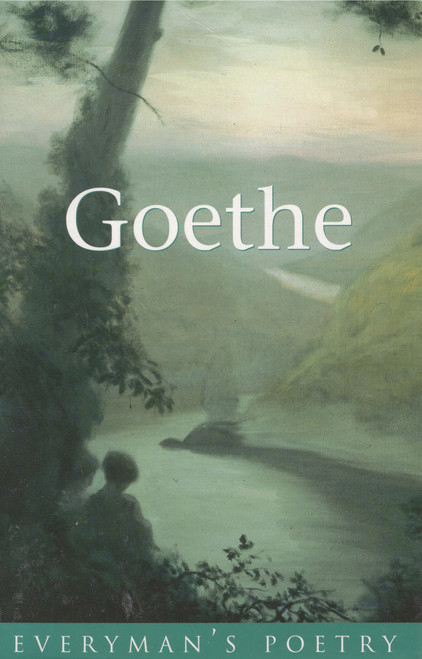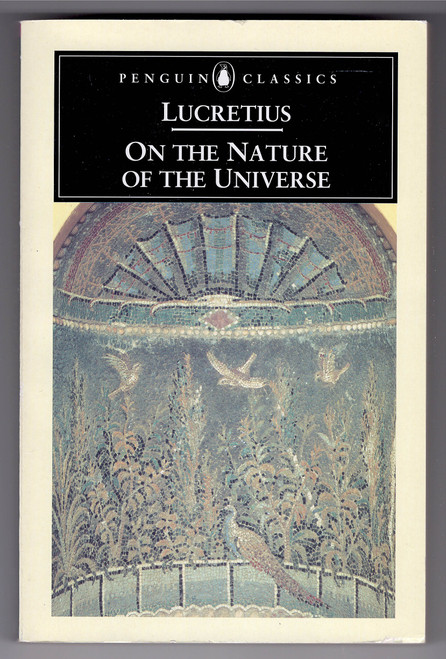"I am no specialist in the study of Lucretius; I am not a Dante scholar nor a Goethe scholar. I can report no facts and propose no hypotheses about these men which are not at hand in their familiar works, or in well-known commentaries upon them. My excuse for writing about them, notwithstanding, is merely the human excuse which every new poet has for writing about the spring. They have attracted me; they have moved me to reflection; they have revealed to me certain aspects of nature and of philosophy which I am prompted by mere sincerity to express, if anybody seems interested or willing to listen."
The modesty exhibited in the above disclaimer--from Santayana's preface to Three Philosophical Poets--should be viewed in the context of the author's extraordinary impact as a philosopher and teacher. The Sense of Beauty has claim to being the first major work on aesthetics written in the United States; the multivolume The Life of Reason is arguably the first extended analysis of pragmatism anywhere. Among Santayana’s many well-known Harvard students, Wallace Stevens has acknowledged a clear debt to his work.
Based on a course Santayana taught at Harvard, Three Philosophical Poets was first delivered to the public as a series of lectures at Columbia University in 1910. Santayana’s lifelong, learned meditation on the relationship between philosophy and art is apparent. (Santayana’s own prose style has long been considered among the most eloquent in all of philosophy.) Here, he discusses the chief phases of European philosophy—naturalism, supernaturalism, and romanticism—as they are set forth and epitomized by the works of Lucretius, Dante, and Goethe, respectively.
Foreword by Michael Dirda
Editorial Reviews
“[A] brilliant and admirable little book.” —T. S. Eliot
“The exquisite and memorable way in which he has always said things has given so much delight that we accept what he says as we accept our own civilization. His pages are part of the douceur de vivre.” —Wallace Stevens
“Santayana was the real excitement for me at Harvard, especially Three Philosophical Poets….It really fixed my view of what poetry should ultimately be.” —Conrad Aiken
About the Author
A gentle philosopher-poet, born and reared in Spain, educated at Harvard University and later professor of philosophy there, George Santayana resided in England, France, and Italy after 1914. At the beginning of World War II, he entered the nursing home in Rome managed by nuns known as the Blue Sisters and remained there until his death. His last book, The Poet's Testament (1953), contains a few unpublished lyrics, several translations, and two plays in blank verse. The title comes from the poem read at his funeral, which begins: "I give back to the earth what the earth gave/All to the furrow, nothing to the grave." Santayana wrote philosophy in an inimitable prose, enriched with imagery and metaphor. His meanings were always complex and often ironic. In this style, so untypical of the professionalized philosophy common in the English-speaking world during his lifetime, Santayana nevertheless articulated an epistemological critical realism and an ontology of essence and matter that drew the attention and admiration of philosophers and scholars. His first published philosophical book, The Sense of Beauty (1896), was an important contribution in aesthetics, a classic text that is still in use. His multi-volume work The Life of Reason expresses his naturalistic philosophy of history and culture. It states the essence of his attitude toward nature, life, and society. Scepticism and Animal Faith (1923) presents his theory of knowledge and also serves as an introduction to his system of philosophy, Realms of Being (1927--40). The titles of the separate volumes of this remarkable work, now out of print, reveal the lineaments of his system: Realm of Essence (1927), Realm of Matter (1930), Realm of Truth (1937), and Realm of Spirit (1940). His ideas were "popularized" in his only novel, The Last Puritan, which became a surprise bestseller overnight. According to the New York Times, "He came into a changing American scene with a whole group of concepts that enormously enriched our thinking. He gave a moving vitality to what had often been obscure abstractions...he made the whole relationship of reason and beauty, each to the other, come alive and stay alive." Although Santayana's Complete Poems (1975) is out of print, several volumes of his poetry are available and are listed below. Publication of The Complete Works of George Santayana, under the general editorship of Herman J. Saatkamp, Jr., is in progress. Conforming to the guidelines of a critical edition, The Complete Works is a long-range multi-volume project of which a few volumes have already appeared to critical acclaim.







